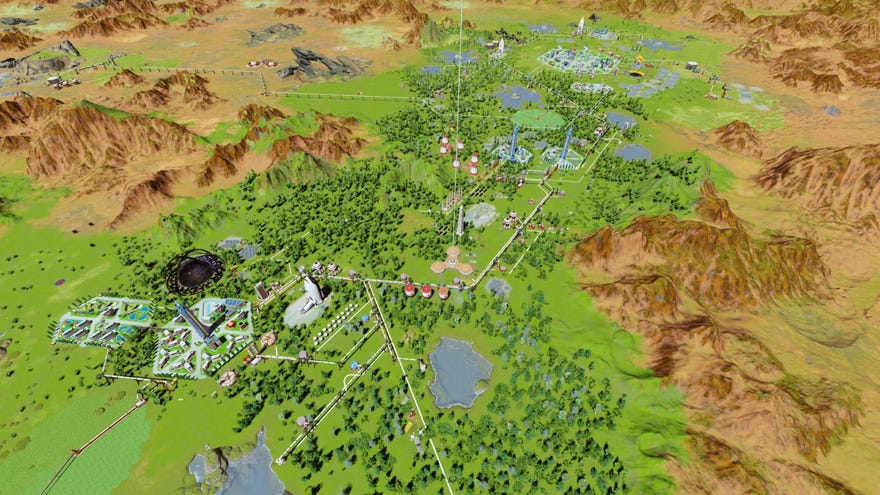Wot I Think - Surviving Mars: Green Planet
Quaid, start the reactor
I’m trapped on Mars, and it’s getting cold. Despite the reflective sheeting I’ve hung up to insulate my workspace, night has long since fallen, and the heat is leaching from the glass walls. I’m eating boiled potatoes yet again, and I miss my family like crazy. But there’s no way I can see them again, until I’ve solved a lot of problems
So I put another layer on, rub my hands to warm them, and press on with the mission. Leaning forward to inspect my screen again, my face is lit with the dull red glow of the monitor - the same sombre ochre as the Martian surface. My face looks haggard in that light, as I review the colony’s dwindling water stocks. I’ll have to set a new vaporator, and that’ll mean making new parts, which I’ll need metals and… yeah, it’s going to be a long night yet.
But then my eye catches on something else, and a new colour reflects on my glasses. Green. On one tiny scrap of Martian soil, exposed to that whole frigid desert, a dusting of lichen has taken root at last. Suddenly, my whole perspective changes: it’ll be worth sacrificing any amount of sleep to see that patch of green spread.
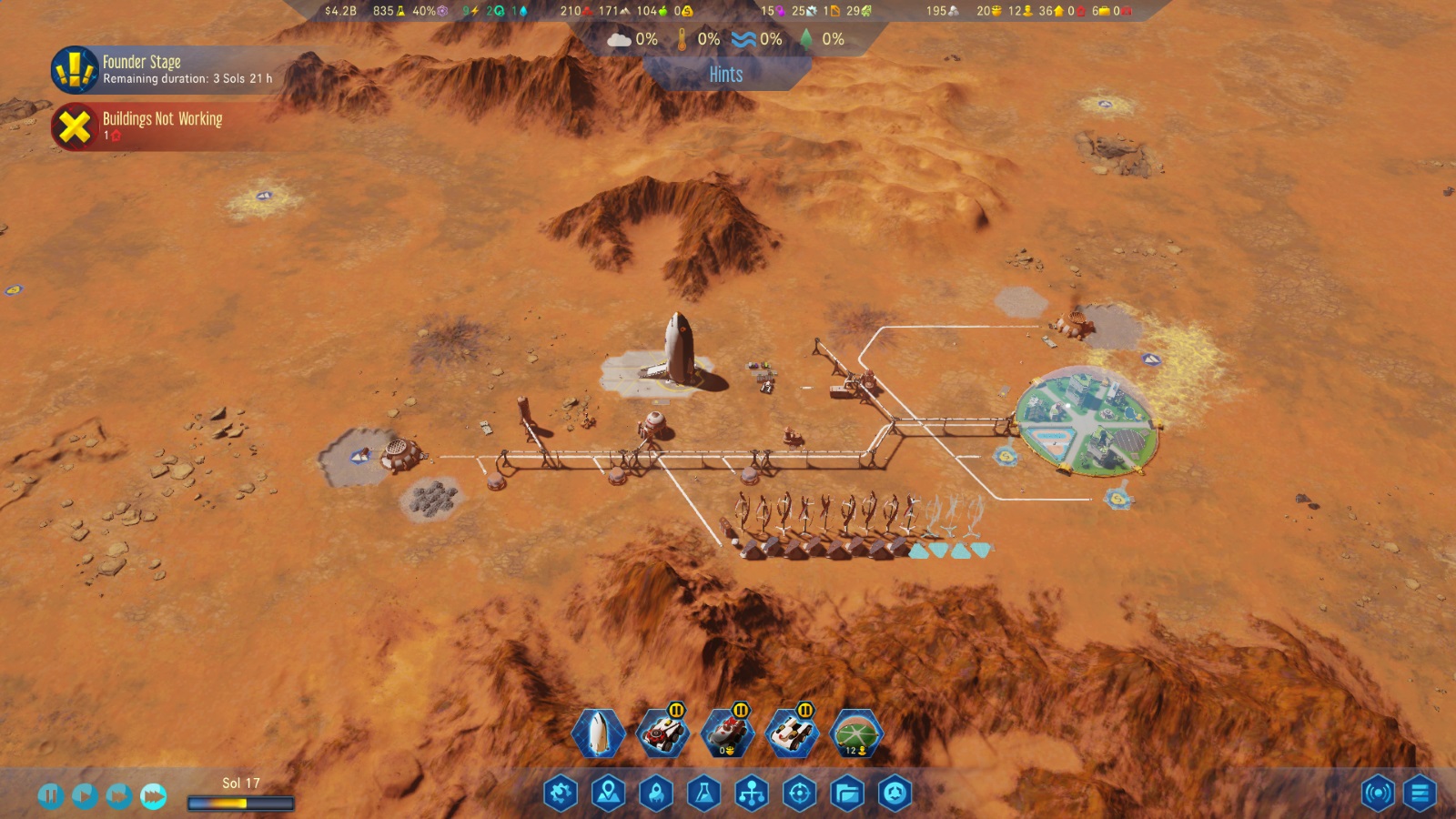
I’m eating potatoes because that’s what was left over from dinner, and the rest is because I work in a conservatory and it gets cold at night. My mission is to have a go on Green Planet, the new DLC for Surviving Mars, and I began operations at 16:00hrs. It’s now coming up on 01:00hrs the next day: I had been anticipating a brief recon expedition, but much like the Opportunity rover, it seems my operating parameters have been dramatically extended.
I’ll get to it: I found Surviving Mars a tiny bit disappointing when it was first released in March last year. Not bad by any means - just a little frustratingly finicky, and not something I felt compelled to return to after reaching the midgame a handful of times. As Alec wrote last summer, a lot of early patching refined the game somewhat, but I still felt it lacked something in terms of scope. Its first DLC, Space Race, didn’t do much to change that - I almost never found a reason to interact with the other colonies it modelled, even if they did make the world feel richer.
But with Green Planet, Surviving Mars is utterly transformed. It’s like I’ve had a game called “Horse.exe” for the last year, which simulated a perfectly lovely horse - but one with no limbs. Now the horse’s legs have been released, and the galloping can begin.

Green Planet’s big thing is terraforming Mars: gradually increasing its atmospheric density, water levels, and temperature until earthly life can thrive outside of sealed domes. It’s one of the most prevalent Big Ideas in science fiction, and probably the first big work on the subject was Clarke’s The Sands of Mars in 1951.
The foundational text on terraforming mars, however, came in the 90s with Kim Stanley Robinson’s epic Red, Green and Blue Mars trilogy. I read these books in my teens, and they had a massive impact on my imagination. I even remember daydreaming at the time (it was a shitty February morning, on the 161 bus) about how cool it would be if someone would make a game about the slow, massive work of making Mars habitable.
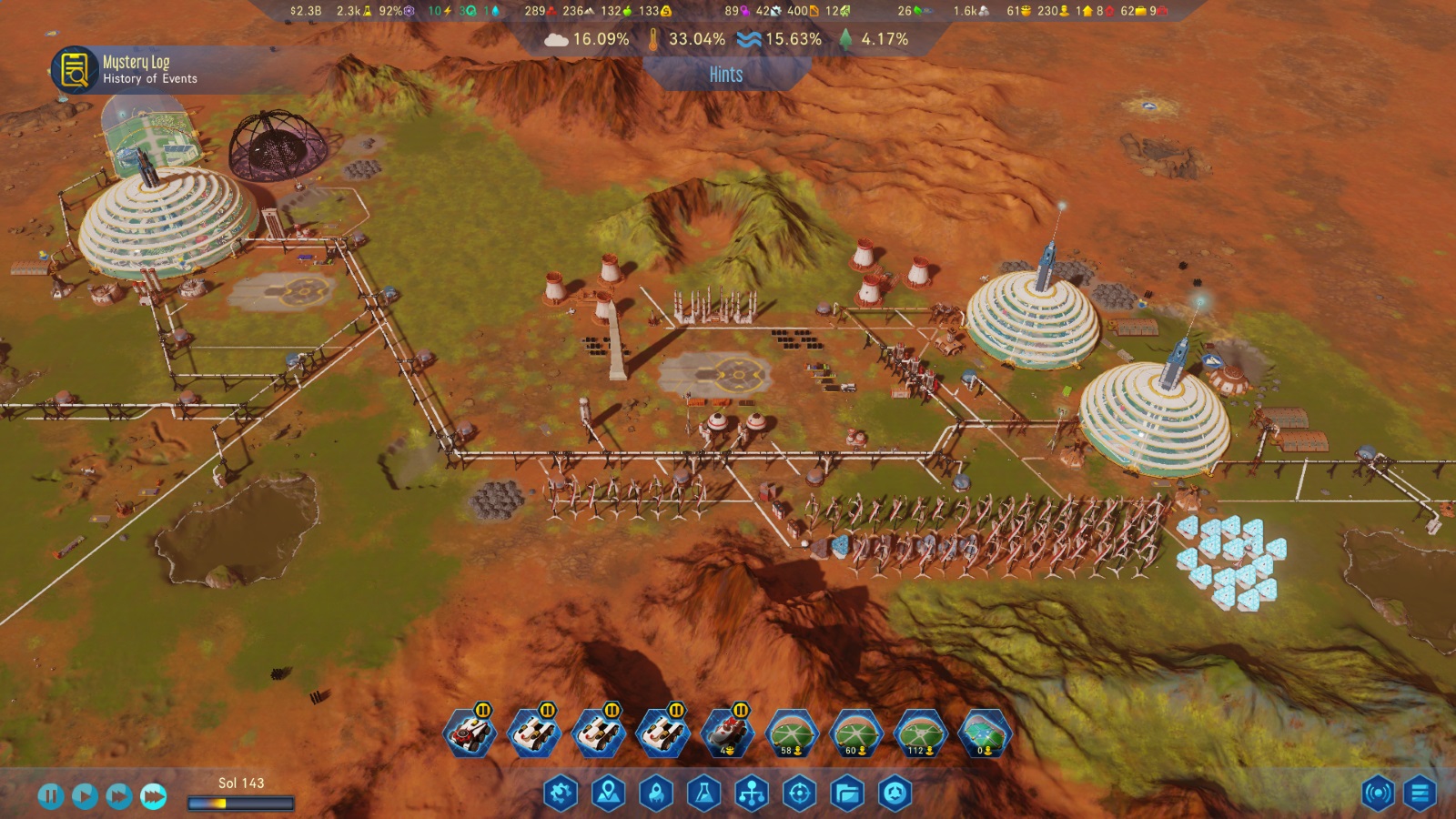
Well, now they have. And Green Planet takes so many concepts from both Robinson and Clarke that it might as well be a literary adaptation. You can do it all: releasing clouds of lichen spores from seed banks in the hope something will take. Condensing water from the atmosphere and pouring it straight onto the surface until stubborn puddles form. Crashing ice asteroids into the planet and building solar mirrors to melt the poles. Burning rocks to make greenhouse gases, releasing residual core heat, strengthening the magnetosphere.
The work involved in reshaping a planet is fittingly titanic: the expense of even the first baby steps is almost unthinkable to a fledgling colony, while even a thriving city of hundreds will have to work hard to maintain progress. And it’s not over quickly, either. Getting the four parameters (atmospheric density, moisture, temperature and greenery) up to 100% viability can take tens of hours, easily doubling the span of a playthrough.

It would have been easy to implement terraforming as a handful of late game megaprojects, designed to give players something to do when they’ve done everything else. But the reality is far more elegant - such is the scale of the task, you’ll want to start investing in terraforming as early as possible, putting every spare gram of resource into the epochal labour.
Cleverly, it’s not a thankless task either - as the atmosphere thickens, your wind turbines will generate more energy. As the planet’s moisture level grows, you’ll find it easier to draw water from the atmosphere and suffer less from dust storms. The net investment is still gargantuan, but bit by bit, you’ll reap the benefits.
And those are just the mechanical incentives. By far the greatest rewards are visual: seeing Mars transform gradually from an alien desert into a lush, pine-swaddled wilderness that could be Siberia in high summer. It’s not just a palette swap either: the haze of dust disappears, the quality of light changes utterly, and rain begins to fall. Mars truly does become a different world.
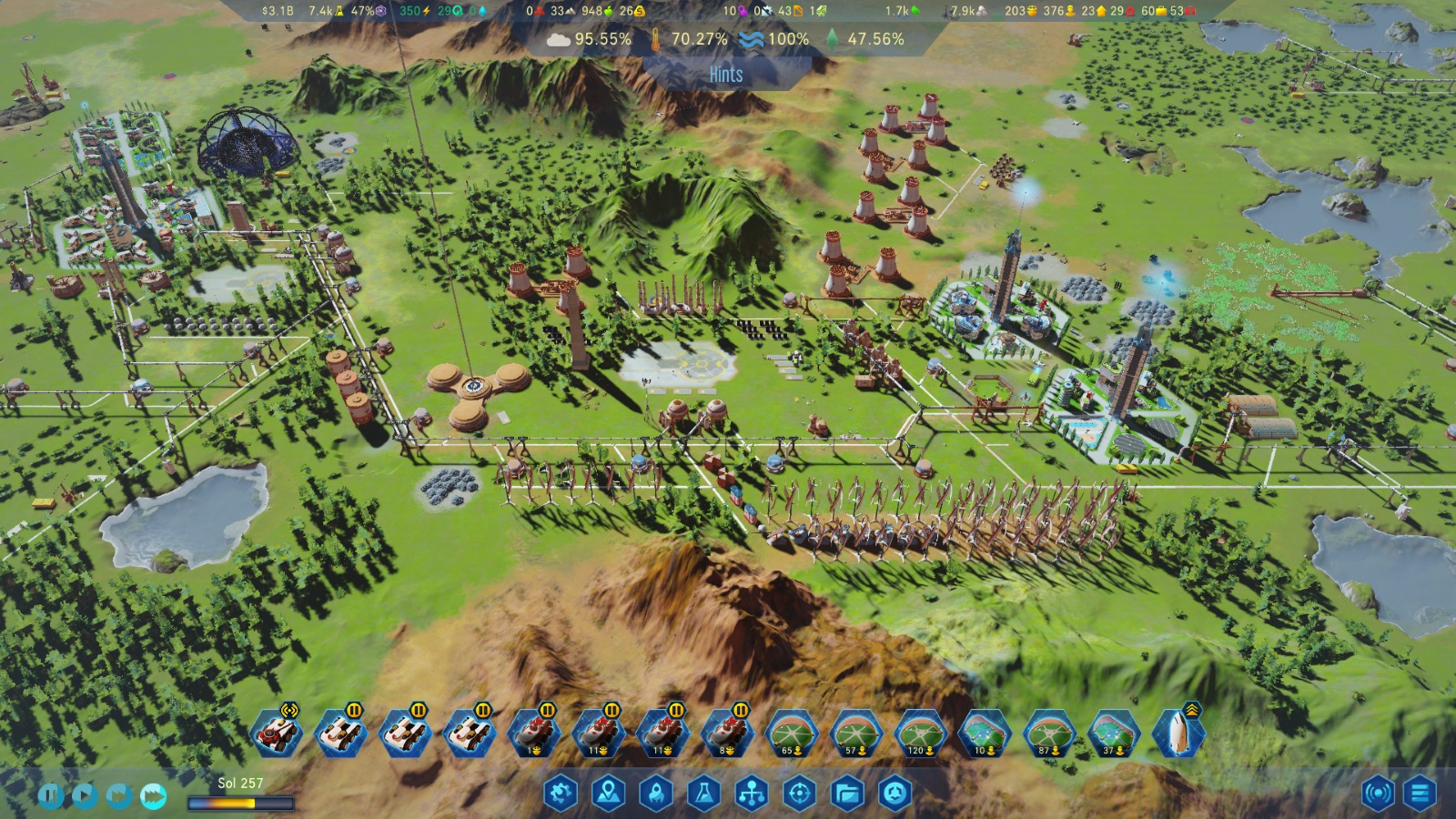
Again, a lesser game would have Mars transformed in several big ‘jumps’ as you reached certain numerical milestones, with lakes or trees suddenly popping up everywhere. But the change happens so incrementally over the hours that you barely notice anything change from one minute to the next.
Quite often, the end stages of big sim games leave me feeling quite hollow, feeling unsure why I’ve just dumped a chunk of my life into what was essentially a well disguised spreadsheet. Not so with Green Planet. At the end of my first terraforming, I spent a good half hour just looking over the map with pride.
There was my capital city, built in the open air, and surrounded by huge robot-tended wheat farms. There was the space elevator, that colossal engine which had supplied so many millions of tons of raw material for the terraforming, rising out of a dense pine forest. And there, now surrounded by rolling hills and great blue lakes, was the stone obelisk I built long ago to commemorate the site where the first rocket landed. I could hardly believe I was still playing the same game it had landed in. Bravo, Haemimont Games, bravo.
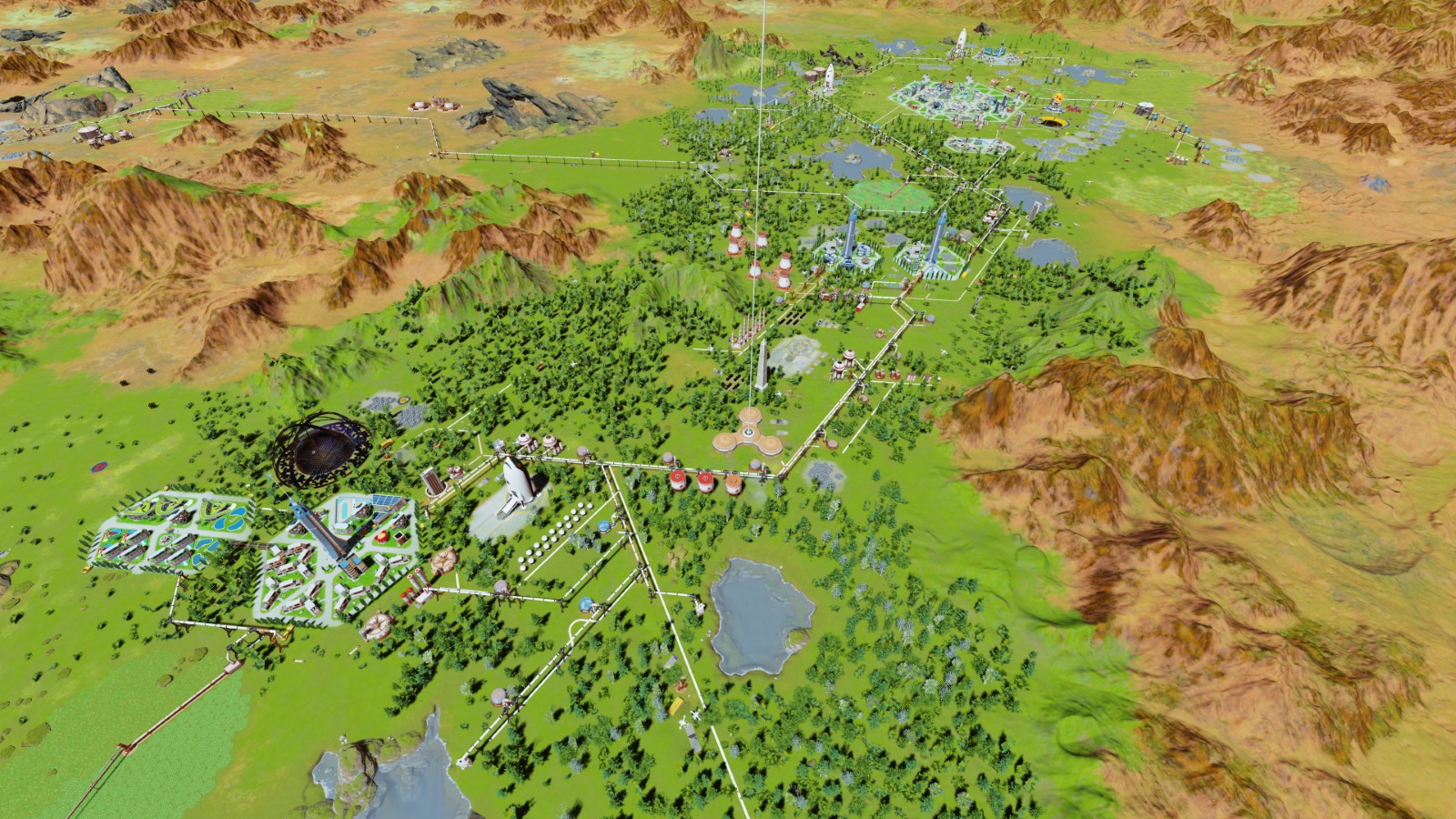
The business of terraforming utterly defines Surviving Mars, to the point where it’s hard to remember what the point of playing was beforehand. Imagine if they’d only added the portal mechanic to Portal after a year, for example, or if they’d gotten three films into the Alien franchise without any xenomorphs showing up. Whether you played the base game or not, if you’ve ever wanted a game about terraforming, you must immediately acquire this.
But now: let’s talk Business. Because this game is published by Paradox, and so the Paradox DLC Discourse will inevitably erupt in the comments section. It happened after the Imperator: Rome review I wrote with Ghoastus, and it will happen here too: “why,” someone will ask, “would they release half a game at launch, and then expect me to pay for the rest of it as DLC a year later?”
While I might gently argue that there’s nothing actually wrong with this approach (and that in an age of digital releases, constant patching and early access, we should stop expecting developers to shit out games as single, perfect lumps of gold), there’s no denying that you could choose to see Surviving Mars: Green Planet in this light. But even so, you can still get the game and all its DLC for thirty quid on Steam, and you’d have a hard time calling that bad value.
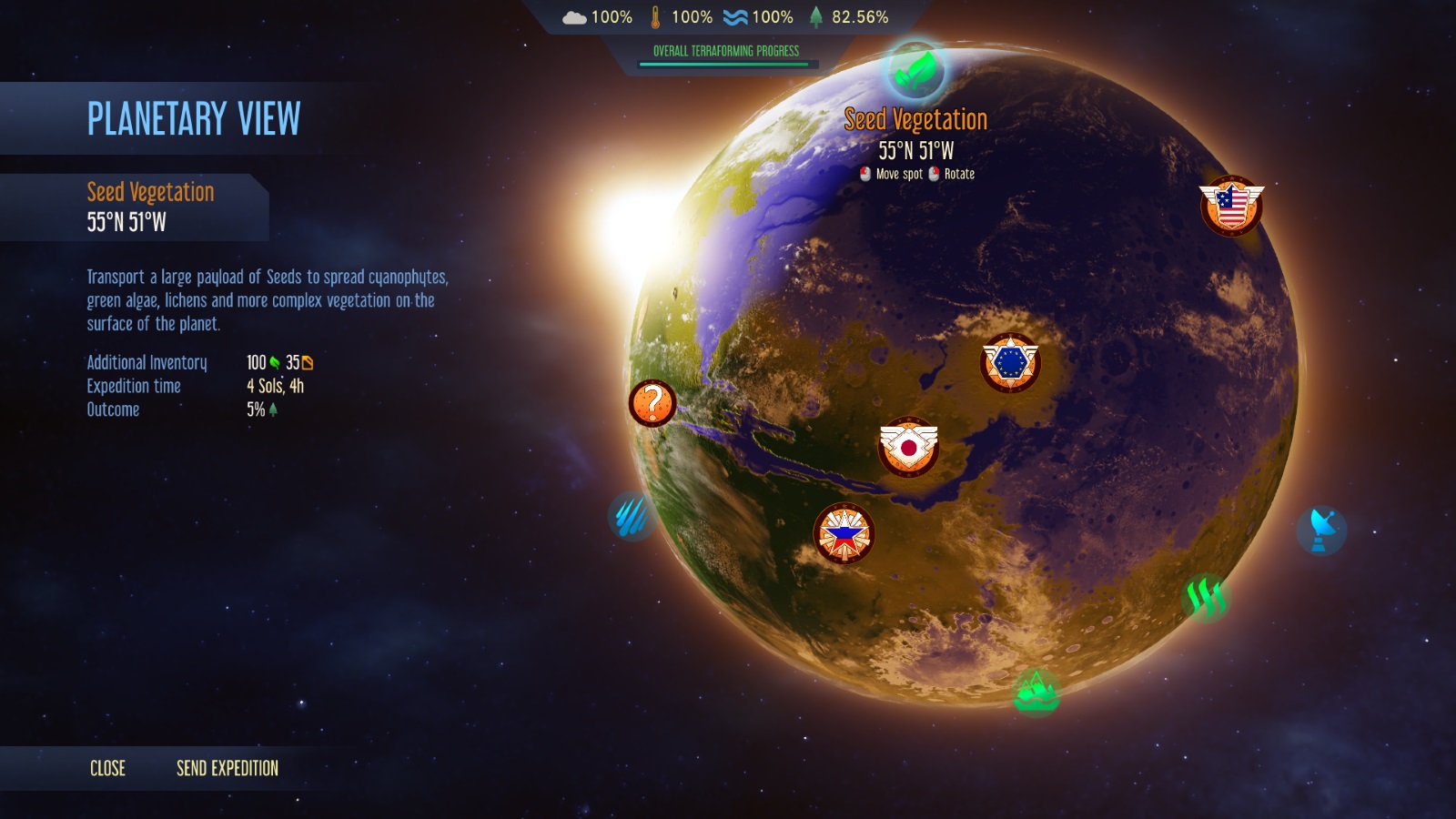
Still, I’ll say this: this is the game Surviving Mars should have been in the first place. Releasing what feels like the heart of the game a year late will mean a lot of people overlooking it as minor DLC for a base product that didn’t grab them, and it might not get the love it deserves as a result.
What’s more, it’s still not sorted some chronic problems with the game. The AI colonies introduced with Space Race are still virtually irrelevant to play, the system of moving resources around to be within range of constructions is still fiddly and annoying, and minor problems still end up generating a lot of alert spam that clogs the left side of the screen.
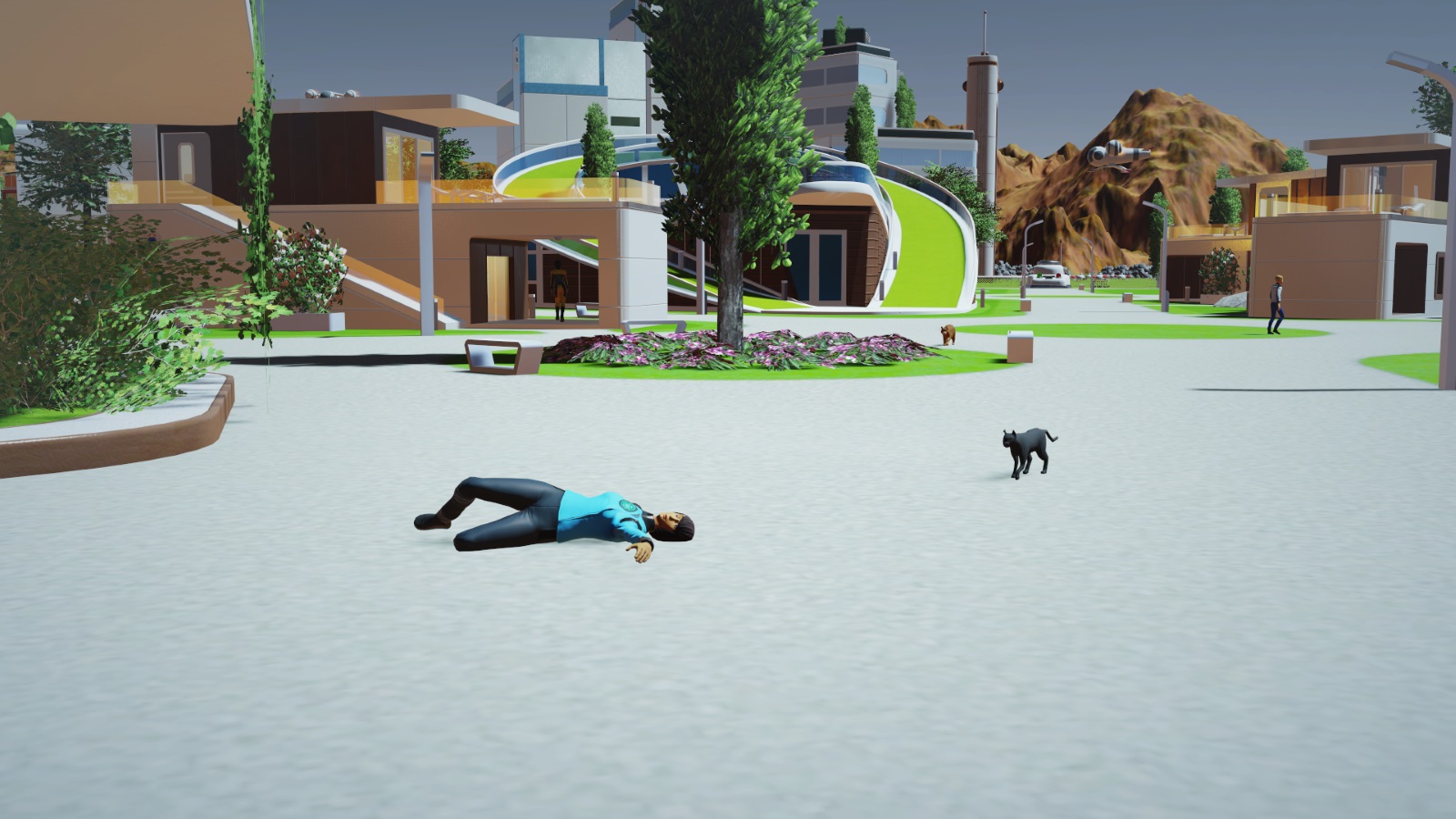
Crucially, there are also still some issues with drone AI and management. For example, in the latter stages of my game, I nearly lost 300 people because my worker drones had got obsessed with moving waste rock from the outspill of a huge mine, like the enchanted brooms in Fantasia, and were letting all my vital systems go to shit. In the end I solved the issue with some frantic micromanagement and stockpile deletion, but it would have been good to have been able to avoid the issue with, say, work priority settings a la Rimworld.
My other issue with Surviving Mars: Green Planet is a petty one. The choice of sols (days) as a measurement of in-game time completely bungles the sense of epochal planetary change involved in terraforming. I can understand the choice, as it allows for a day/night cycle, and little colonists walking around that you can peer at, but it seems pretty bizarre that even in a leisurely game, Mars becomes earthlike in just 300 days.

Personally I would have changed sols to years, despite the various weirdnesses that would imply about the speed of pedestrian movement, if only to add to the sense of weighty, historic achievement that builds as the game progresses.
That is all I can really say against this game. If it had launched in this state (even at a higher price), my hand would have slammed that Bestest Best sticker all over it. Even now, it’s a marvellous realisation of an SF fantasy, even if it’s taken fourteen months to get there. But then, Mars wasn’t terraformed in a day, was it?
Surviving Mars, it turned out, was little more than a plucky little rover, diligently raking the regolith to make a place for the main rocket to touch down. Now, however, the eagle has landed, and it’s a bloody lovely bird.
